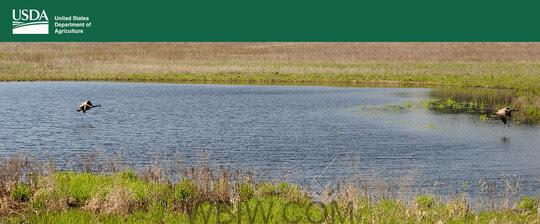
WASHINGTON – The U.S. Department of Agriculture (USDA) is investing $17 million in five Wetland Reserve Enhancement Partnership (WREP) projects, bringing together partners and landowners in a joint effort to return critical wetland functions to agricultural landscapes.

Through WREP, conservation partners and agricultural producers will work with USDA’s Natural Resources Conservation Service (NRCS) to support broader efforts to mitigate climate change by restoring wetlands while also prioritizing assistance to underserved communities.
“Through partnerships, we can accomplish so much more,” NRCS Chief Terry Cosby said. “This year, NRCS focused our investments on projects that support underserved landowners who face significant barriers in accessing USDA conservation assistance programs. Our partners provide a direct link to these communities, and we appreciate their help in helping us conserve America’s wetlands. All year, but especially during America’s Wetlands Month, we recognize wetlands’ many benefits, from flood prevention to carbon sequestration, and from wildlife habitat to recreation.”
NRCS is funding five proposals that prioritize high-impact projects and assistance to underserved farmers and ranchers, through five new WREP projects.
2023 WREP projects include:
The Nature Conservancy – Arkansas/Mississippi Alluvial Valley (enrollment goal – 1,650 acres): This project will restore forested wetlands and improve wildlife habitat in the Arkansas/Mississippi Alluvial Valley with a focus on underserved landowners. A primary goal is to increase wetland habitat and connectivity, reduce siltation and nutrient runoff into adjacent waterways, and increase natural recharge to the Mississippi Alluvial Aquifer. A minimum of 668 acres will be specifically for the enrollment of underserved landowners.
Ducks Unlimited – Texas Playa Lakes (enrollment goal – 700 acres): This project will protect and restore playa wetlands and adjacent uplands buffers in the Texas Panhandle. Playas are the centers of biodiversity on the plains supporting 185 bird species, 450 plant species, 13 amphibian species, and 37 mammal species. In this dry landscape, playas are the main source of water for migrating waterfowl and shorebirds as well as resident prairie birds. Partners will target playas surrounding local towns and communities whose available drinking water is impacted due to heavy center-pivot irrigation activities. This project is also focused on improving monarch and lesser prairie chicken habitats. Partners are working with nine separate organizations serving underserved landowners across Texas to increase their participation in the program.
Ducks Unlimited – Missouri Bootheel (enrollment goal – 240 acres): This project will acquire easements enabling project partners to protect, restore and enhance wetlands within the Mississippi River Basin Healthy Watershed Initiative (MRBI) landscape of southeast Missouri. A total of 240 acres owned by underserved landowners will be targeted for enrollment.
The Nature Conservancy – Tri-State Conservation Partnership (enrollment goal – 1,500 acres): This project focuses on enrolling underserved landowners and restoring forested wetlands within priority portions of the Mississippi Alluvial Valley (MAV) in Arkansas, Louisiana, and Mississippi. A minimum of 750 acres, will be specifically targeted for enrollment of underserved landowners.
Mississippi River Trust – Lower Batture (enrollment goal – 2,000 acres): This project aims to achieve more sustainable land and water management in the river’s active floodplain, or Batture, and nearby flood-prone lands in Arkansas, Louisiana, and Mississippi, thus providing significant ecological, economic and societal benefits. A minimum of 250 acres will be specifically targeted for the enrollment of underserved landowners.



